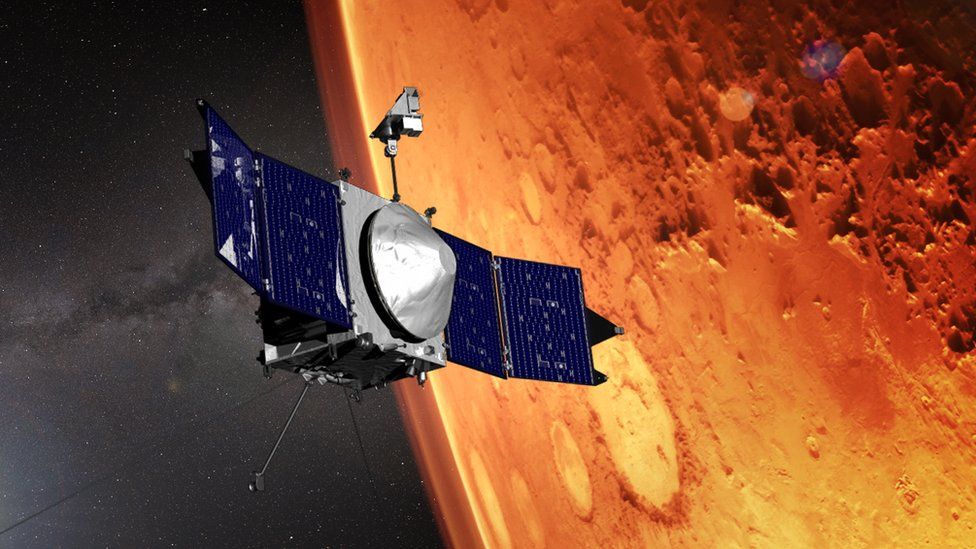Red Planet Rendezvous: The Extraordinary Quest of Mars Missions
Introduction
Mars, the fourth planet from the Sun and Earth’s planetary neighbor, has long held a mysterious allure for humanity. For centuries, it has captivated astronomers, inspired science fiction, and ignited the imaginations of dreamers and explorers. In this article, we embark on an extraordinary journey, exploring the evolving world of Mars missions, the breakthroughs that have brought us closer to the Red Planet, and the promising future of human exploration of this enigmatic world.
A Historical Perspective
Mars has been a subject of fascination for centuries. Its reddish hue, often visible to the naked eye, earned it the name “Red Planet.” In the late 19th and early 20th centuries, the advent of telescopes allowed astronomers to observe features on Mars, such as canals, sparking speculation about potential intelligent life. However, it was only in the latter half of the 20th century that we began sending robotic missions to unravel Mars’ mysteries.
Robotic Pioneers
Mars missions began with flyby and orbiter missions, but it was the robotic landers and rovers that revolutionized our understanding of the planet:
- Viking Program: In the 1970s, NASA’s Viking 1 and 2 landers became the first spacecraft to successfully touch down on Mars. They conducted experiments to search for signs of life, providing valuable insights into the Martian environment.
- Pathfinder and Sojourner: In 1997, the Mars Pathfinder mission deployed the Sojourner rover, a small robotic explorer that demonstrated the feasibility of planetary rovers.
- Spirit and Opportunity: The twin rovers, Spirit and Opportunity, landed on Mars in 2004. They far outlived their planned mission duration and made groundbreaking discoveries about the planet’s past, particularly in relation to the presence of liquid water.
- Curiosity: The Mars Science Laboratory, with the Curiosity rover, landed on Mars in 2012. Curiosity continues to explore the planet’s geology and search for signs of habitability.

Human Aspirations
While robotic missions have provided a wealth of information, human missions to Mars have long been a dream of space exploration. The challenges are immense, but space agencies and private companies are taking significant strides to make this dream a reality:
- NASA’s Artemis Program: NASA’s Artemis program, while primarily focused on returning humans to the Moon, has Mars as a long-term goal. It aims to develop the necessary technologies and systems for sustainable human presence on the Moon, which could serve as a testbed for Mars missions.
- SpaceX’s Starship: SpaceX, under the leadership of Elon Musk, is developing the Starship, a fully reusable spacecraft designed for missions to Mars and beyond. Musk envisions a future where humans establish a self-sustaining colony on the Red Planet.
- International Collaboration: Space agencies worldwide, including ESA, Roscosmos, and CNSA, are planning and executing Mars missions to uncover the planet’s secrets, prepare for human exploration, and continue international collaboration in space.
The Promising Future
The future of Mars missions holds tremendous promise. As technology advances and our understanding of the planet deepens, we are moving ever closer to unlocking the Red Planet’s mysteries and sending humans on interplanetary journeys.
- Exploring the Martian Environment: Ongoing and future missions will explore Mars’ geology, climate, and potential habitability. Recent discoveries suggest the presence of liquid water beneath the surface, raising intriguing possibilities for life.
- Preparation for Human Missions: Robotic missions are essential for scouting landing sites, testing life support systems, and evaluating potential resources that could support future human missions.
- Human Colonization: The dream of establishing a human presence on Mars is becoming more tangible. While significant challenges remain, visionary missions, like SpaceX’s plans for colonization, are shaping our understanding of the possibilities.
- International Collaboration: Collaboration between space agencies and private companies ensures a shared commitment to exploring and protecting Mars, fostering global cooperation in the spirit of exploration.
Conclusion
Mars missions represent the pinnacle of human curiosity and ingenuity. From the early dreams of canals to the tangible missions of today, Mars has remained an object of fascination and scientific exploration. With each successful mission, we move closer to understanding the planet’s secrets and, ultimately, sending humans to stand on the Martian surface. As the Red Planet beckons us with its enigmatic landscapes and potential for scientific discoveries, the next chapter in our cosmic journey is destined to be written on Mars.